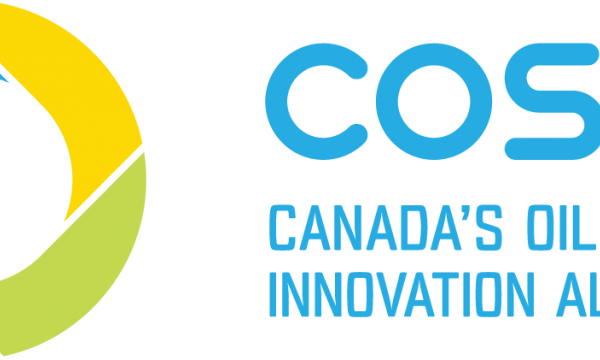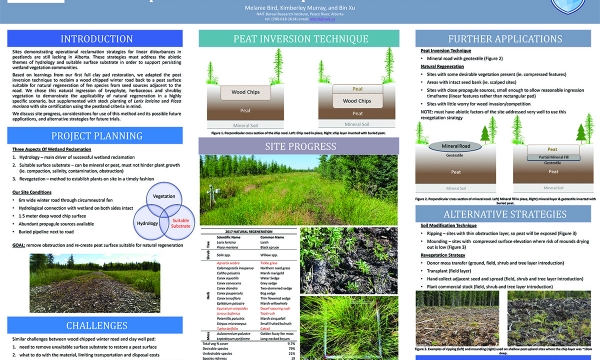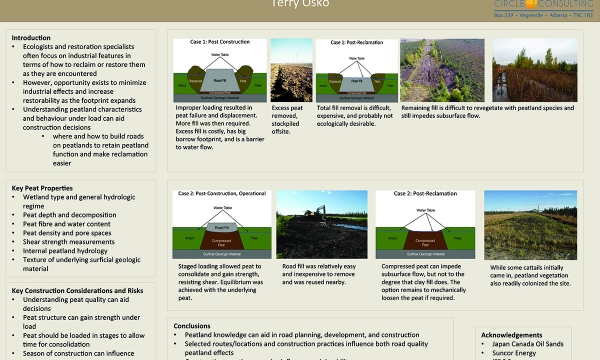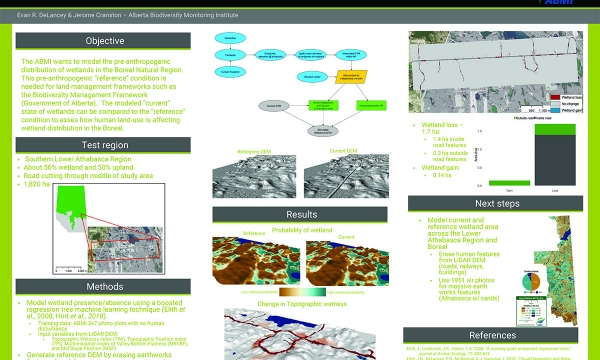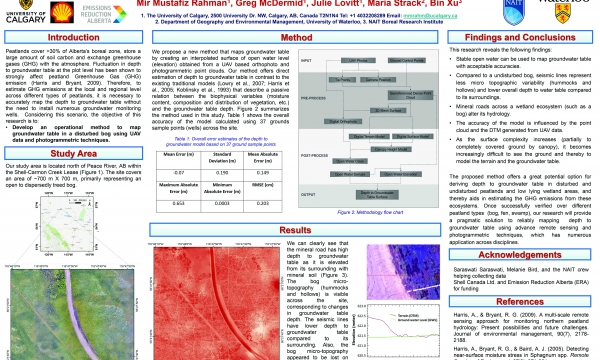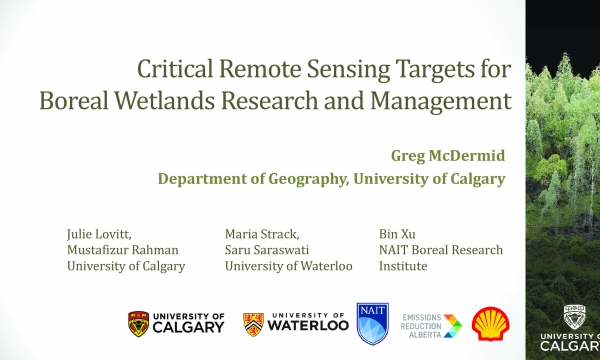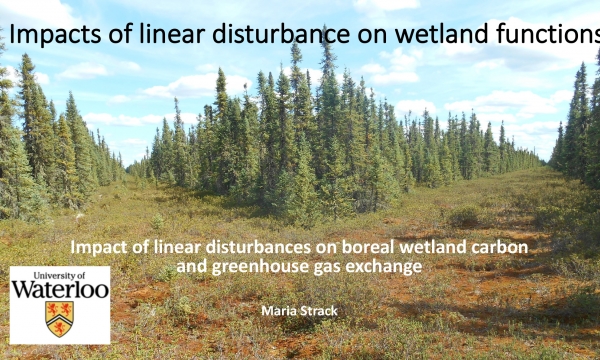Ressources de connaissances sur les terres humides
Ressource
Resource Date:
April
2017
This document is intended as a guide for reclamation of In Situ facilities in a peatland environment, specifically pad and road disturbances. Pilot studies conducted in Alberta were carried out by...
Ressource
Auteurs
Michael Merchant
Alain Richard
Kevin Smith
Rebecca Warren
Rebecca Edwards
Adam Spitzig
Dan Fehringer
This research poster describes the Enhanced Wetland Inventory (EWC) and Boreal Wetland Classification System developed by Ducks Unlimited Canada. Presented at the NAIT 7th Seminar on Linear...
Ressource
Auteurs
Melanie Bird
Kimberley Murray
Bin Xu
This research poster outlines site studies of the peat inversion technique for reclaiming wood chipped winter access roads, including project planning and site condition assessment, future...
Ressource
This research poster describes an overview of technical methods, peat properties and considerations, and development outcomes for linear feature (road) construction planning and development. Presented...
Ressource
Auteurs
Evan DeLancey
Jerome Cranston
This research poster describes a model used to assess pre-anthropogenic distribution of wetlands in the Lower Athabasca Region. Presented at the NAIT 7th Seminar on Linear Disturbance Impacts on...
Ressource
Auteurs
Line Rochefort
Kathy Pouliot
This research poster gives examples of peatland restoration using the burial under peat method at two sites in Quebec. Presented at the NAIT 7th Seminar on Linear Disturbance Impacts on Boreal Wetland...
Ressource
Auteurs
Mir Mustafizur Rahman
Gregory McDermid
Julie Lovitt
Maria Strack
Bin Xu
This research poster covers a study using photogrammetric remote sensing to determined water table depth in a disturbed bog. Presented at the NAIT 7th Seminar on Linear Disturbance Impacts on Boreal...
Ressource
This presentation discusses linear feature disturbances or boreal peatlands and reclamation trials of various sites. Presented at the NAIT 7th Seminar on Linear Disturbance Impacts on Boreal Wetland...
Ressource
Auteurs
Greg McDermid
Julie Lovitt
Mustafizur Rahman
Maria Strack
Saru Saraswati
Bin Xu
This presentation discusses remote sensing to assess groundwater, microtopogpraphy and above-ground biomass, as well as wetland management. Presented at the NAIT 7th Seminar on Linear Disturbance...
Ressource
This presentation provides and overview of linear disturbance impacts on carbon and greenhouse gas exchange and links various research posters also presented at the NAIT 7th Seminar on Linear...


